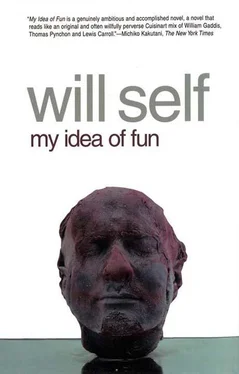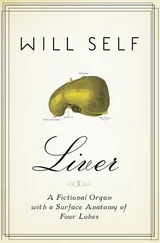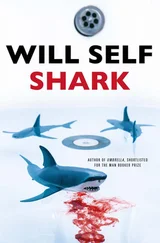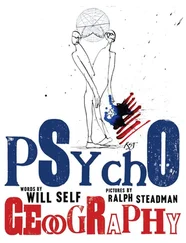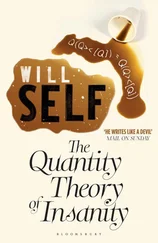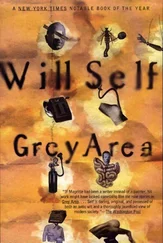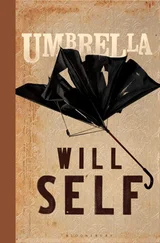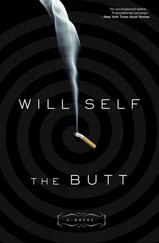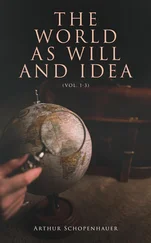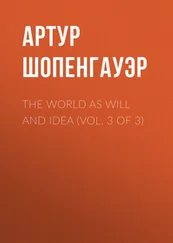When Gyggle first explained this experiment to me I almost laughed at how facile it was. For me — who had consciously to struggle against the imagaic maelstrom implicit in the idea of retroscendence — to have to deploy my powers in this pedestrian manner seemed nothing less than absurd. I said as much. ‘I think you've missed the point about my eidetiking, Dr Gyggle.’
‘Oh yes, and why's that?’
‘Well, you see — I thought I explained this to you — if I were to eidetik now I would go into a kind of a trance. No time would pass for you but during that trance I could unpack whatever reserves of information this particular visual scene contains.’
‘Give me an example.’
‘Well, I could, for instance, discover what shape your chin is under that beard. ‘
It was meant to be a jocular observation but even as I said it I knew that I had transgressed some important Gyggle taboo. It's like that with beards, particularly medical beards and even more so psychiatric ones. Although their wearers adopt them as naturally woven badges of individuality, the second they are challenged, taken out of context, they rise up to form chin-borne hackles.
‘I don't see that my beard has anything to do with it,’ his honey voice huffled. ‘But if you think you can — do.’
I went into a full-blown eidetic trance. I encapsulated the whole scene, the dingy cubicle with its plywood partitions; the warped lino, as undulant as the earthen floor of a barn; Gyggle's hideous cheesecloth shirt, the buttons pulled apart to the sternum, revealing still more tight ginger curlicues. I took in both the general: lunar dust motes caught in the sidereal glare of neon light, and the particular: the smear of cobweb on an inch of mushroom flex that protruded from the ceiling above.
When the eidetic image of the room was fully and accurately frozen inside of me, I made my move, or tried to make my move, because nothing happened. I was somehow reversing that pivotal moment in my eidetic career eight years before, when Mr Broadhurst had bade me look in his waistcoat pocket and then made his move. Now it was I who couldn't move; more than that I wasn't even able to form an idea of what it would be like to move. Formerly my eidetic body, the tool with which I worked upon my visions, had felt as defined as if three-dimensional crop marks had been described in the air. My wilful grasp upon it had been entirely unproblematic, as sure as neat fingers picking up pins, or knitting, and then casting off the atomic stitches of the material world.
I couldn't even imagine what this sensation might be like any more, so utterly had it evaporated. I conceptually fumbled, struggled to get some purchase on the sempiternal sheen of the visual image; but there was nothing, no movement, no astral agility, it remained frozen. Or at least almost entirely frozen. Just before I snapped out of it, aborted the failed trance, I thought I saw — although I couldn't be certain — the ragged hole in the beard through which Gyggle addressed the world unravel a little at its edge, exposing a slug side of what might have been Gyggle's lip.
‘Well then,’ said the old fox, ‘have you eidetically removed the hairs from my chinny-chin-chin?’
‘I–I, I can't seem to. What I mean is — I'm trying.’
‘Trying,’ pronounced the psychiatrist sententiously, ‘is lying.’
‘I can't understand it.’ I was shaking and sweating. If I could no longer eidetik effectively, had my status as apprentice and licentiate of the Brahmin of the Banal been removed at one fell stroke?
‘I'm not surprised,’ said my therapist, ‘for nor can I.’
‘Whaddya’ mean?’
‘Well, put it this way, you claim to be able to derive information from internal visual images which you believe to directly correspond to the phenomenal world.’
‘Whaddya’ mean, “phenomenal"?’ It was the sort of jargon I expected from you-know-who.
‘I mean the commonsensical world of material objects and appearances. You claim that you can discover things that are unknowable in an orthodox fashion by moving about the representation of this world inside your own head. Is that right?’
‘Yeah.’
‘So if I were to screen a feature film for you, and in it there was a scene that took place with two characters talking on a sofa, you would be able to tell me whether there was an object lying behind it?’
‘Yeah.’
‘Supposing it was an animated film — would you be able to enter into that world as well?’
‘I s'pose so, but I've never really done it.’
‘But in the case of such an animated film, there wouldn't be anything behind the cartoon sofa; not only that, the sofa couldn't be said to have a behind at all. Do you see what I mean?’
‘We-ell— ‘
‘No. Not “we-ell”. The point is that you are suffering from a complex delusion. There is nothing behind the cartoon sofa and if you find anything it's because you yourself have put it there. There can be no picture of the world in your head that exists independently of your assertions and beliefs about it. To know something is to participate in a communicable truth. Your whole belief in your eidetic power rests on a misconception of the nature of consciousness itself.’
He was standing over me as he said this, in his characteristic lecturing pose, the edge of a desk slotted firmly into his lack of backside. This posture always made me suspect him of having a horizontal cleft slicing through his buttocks, betokening a random — but adaptive — mutation, taking humans closer to being office furniture. He was chewing gum and the nyum-nyumming of his long jaw sent the tail of the beard wagging across his shirt-front. ‘Come on now,’ he went on. ‘Let's do the rest of the experiments and see if you can prove me wrong.’
I couldn't. I couldn't even manage the simplest of manipulations involving extra-sensory perception. Gyggle started off with the most sophisticated of these, the symbol and colour cards, but was soon reduced to getting me to try and guess and a guess is all I could make — which of three paper cups had a ping-pong ball under it. At my best I did no better than average. Then, when we went back to rotating mentally the computer simulation of the room and attempting to ‘see’ possible lines of sight, I had a further shock. I found that my grasp on the image itself was now hazy, the very mechanisms of my mind seemed to have been injected with lobal anaesthetic, blown up into a fuzzy ineptitude. The Kodak laboratories of my eidesis were being dismantled; soon all that would be left was an out-of-order passport-photo-booth, mouldering on an empty station platform.
To give Gyggle his due, he didn't crow. On the contrary, when that afternoon's session ended and we were walking back across the campus, he put one of his Anglepoise arms across my shoulders and attempted some avuncularity. ‘Ian,’ he schmoozed, ‘you know, you are a prodigy, just not the sort of prodigy you thought you were. May I speak frankly?’ As if you've ever done anything else, I thought to myself but didn't say. ‘You see, I think that you are what's called a borderline personality, with pronounced schizoid tendencies. That sounds a lot heavier than it really is, because what our testing has proved is that you are not psychotic in any orthodox way. When your private reality is challenged, it yields to the truth. Can you see that?’
‘S'pose so.’
‘S'pose so’, that's what stayed with me after we had parted, that ‘S'pose so’, with all the sullen acquiescence it implied. But whatever I thought of him, Gyggle's therapy had been one hundred per cent successful. By forcing me to take part in rituals that were scientifically formulated the psychiatrist had logically inverted the magical process whereby my original eidetic memory had ripped the meniscus, thrusting me into the noumenal world.
Читать дальше
